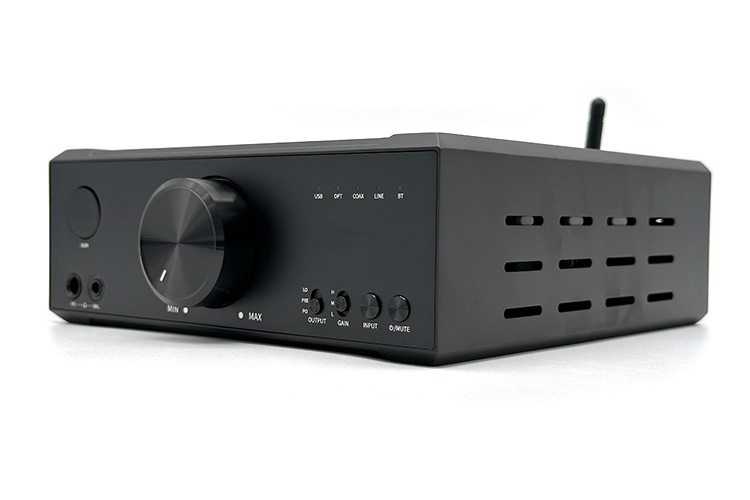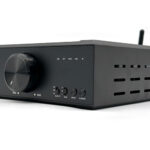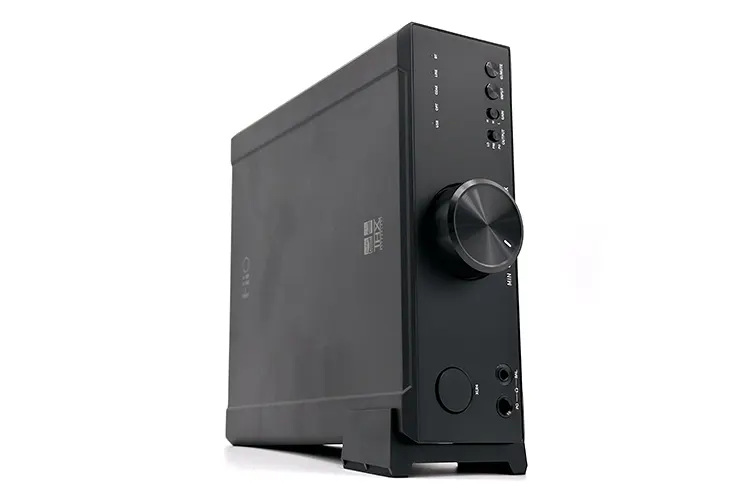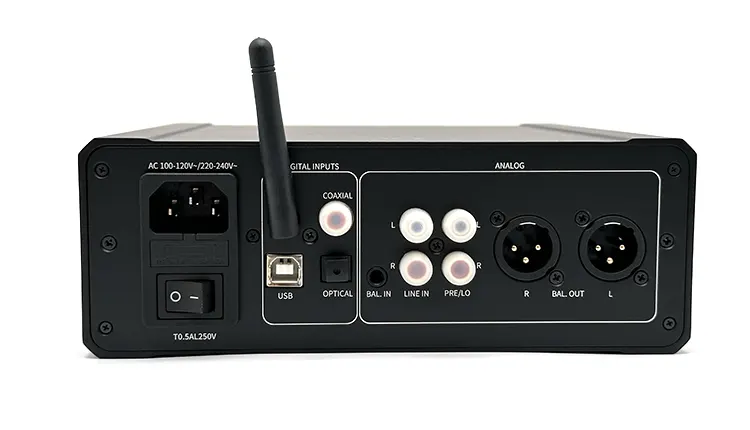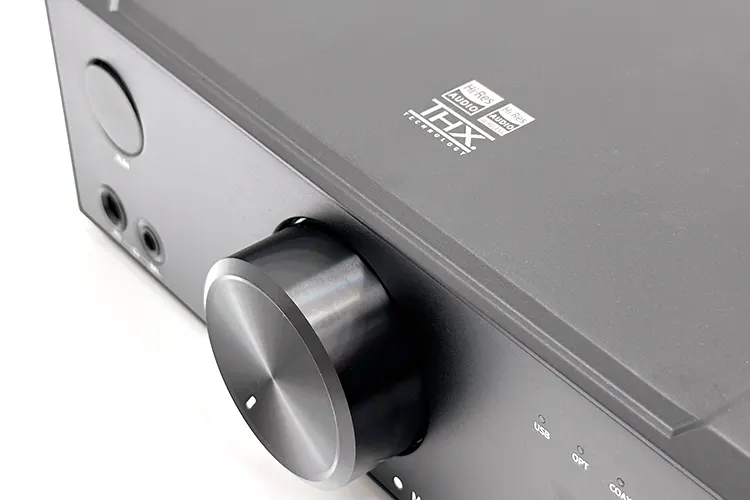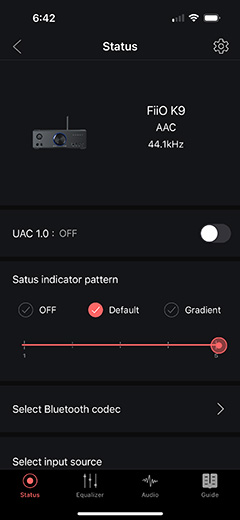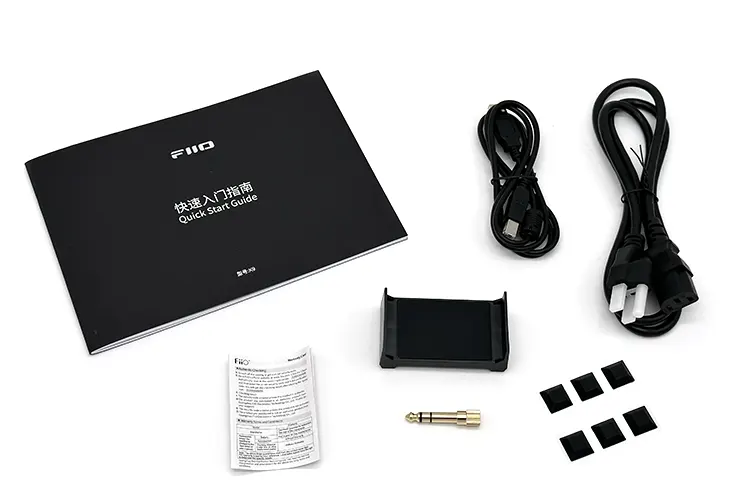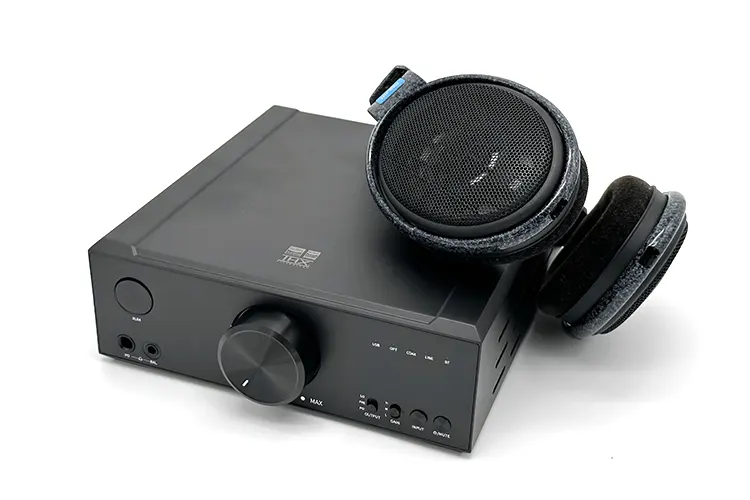Today, we review the FiiO K9, which is a new dual ES9068AS version of their flagship desktop DAC and THX-equipped headphone amplifier. It is priced at $499 SRP.
Disclaimer: This sample was sent to us in exchange for our honest opinion. Headfonics is an independent website with no affiliate links or services. We thank FiiO for their support.
You can click here to learn more about the FiiO gear we have previously assessed on Headfonics.
Note, that this article follows our current scoring guidelines which you can read in more detail here.
A familiar brand here at Headfonics, FiiO has been a jar full of surprises lately, especially with their announcement of the 350Ω FT3 headphones and the capable R7 all-in-one streamer. Extending its lineup outside of its comfort zone, FiiO seems to be taking on the desktop market more seriously recently.
But what has originally occupied the desktop space of FiiO for years is their K-series DACs and amps, which for the most part are quite popular, especially in the entry-level segment.
And to those following, the K5PRO and K9 Pro both had to be reintroduced to their currently available ESS variations after the halt of DAC productions of AKM. So now, the only DAC/Amp using an AKM chip in the series is the K7 BT which I reviewed recently.
I briefly mentioned this since FiiO can now purchase AKM DACs again. But instead of going the nostalgia route and reintroducing a ‘classic’ K9 Pro, they simply trimmed down their TOTL version, sticking to the same DAC chip manufacturer.
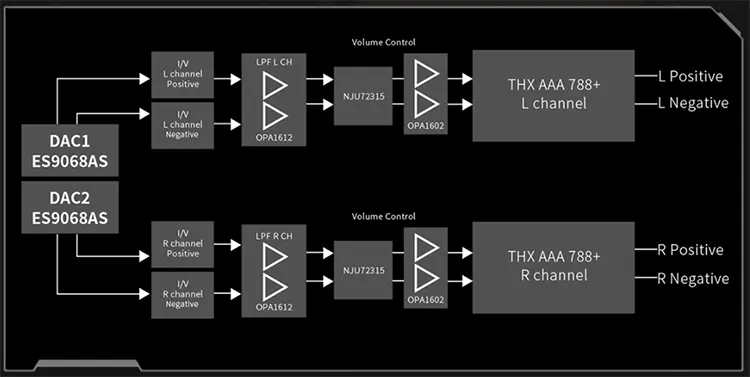
Tech Highlights
Removing the ‘Pro’ out of its TOTL variant, the K9 is $200 lighter on the wallet at $499. But in being able to keep all the exciting parts intact, at least as far as FiiO is concerned, the K9 is likely aimed at the same crowd pining for a K9 Pro ESS, but without the budget.
With a similar internal architecture, the K9 is designed to follow an identical set of configurations to maintain its truly balanced nature. With a separate rail for the left and right channels, there is a dedicated ES9068AS DAC chip from ESS and a THX AAA 788+ amplifier handling the two separate streams.
The K9 Pro ESS was installed with a more advanced ES9038PRO converter. In a dual DAC structure, this 8-channel DAC is utilized fully on each side with a whopping 16 channels available at its disposal.
The ES9068AS, on the other hand, is a lower power 2-channel alternative that only adds up to four distinct channels in the same truly balanced application.
Receiving the analog signal out of the DAC for amplification, the THX AAA 788+ amplifier can push up to 2W of power for 32Ω headphones.
If you look at this number though, this is slightly lower than the 2.1W of maximum power the K9 Pro ESS had. It seems that while the two have the same amplifier technology, FiiO still gave some edge to owners of the Pro version.
Design
How much chrome you see around a vehicle is usually a good indicator of how high up the hierarchy it sits.
I’m not saying the same is occurring in our industry since it is quite known that audiophiles are boring individuals who like their gear in plain black or silver. Done. But in some cases, such as the K9, in sitting below the decked K9 Pro ESS, it had to be different in some ways.
To make the distinction immediately clear, the ‘Pro’ badge on the unit’s upper left corner had to be deleted. And since the K9 is now the ‘base variant’ next to its bigger brother, there is no text replacing the one removed.
The beautifully done mirror-finished gold volume wheel in the middle is also gone in exchange for an all-black aluminum alloy with a sunburst finish in front. I sometimes find myself looking for a bit more grip though when rotating it since the sides are too flush.
A little less recognizable but welcome change in my opinion are the now white text labels on the front of the K9. The darker font on the higher-tiered variant seemed harder to read in darker scenarios.
I/O
The K9 also seems to have the same set of IO in both of its ends if not for two things that FiiO has touched.
An important and easily recognizable change, the Bluetooth antenna of the K9 is now permanently glued to the rear. Slightly shorter than the removable receiver of the K9 Pro ESS, it is limited to swivel to only 180 degrees. It is now positioned in between the power cable and the coaxial input, further reducing its articulation.
The next thing that changed was the markings. Not the type of paint, not the color, what changed is some of the actual texts used to identify the IO.
Maybe it is less significant than the first, but it does tidy up the K9. For example, FiiO now simply calls the ‘4.4mm IN’ and the ‘BALANCED OUT’ as ‘Bal. in’ and ‘Bal. out’ aligning the two.
All the rest of the inputs and outputs seem to be the same as the K9 Pro ESS. The fit and finish are as expected of a decent-priced machine so I think all the ports should be able to last a while.
Controls
Be careful before powering the K9 for the first time. Yes, the print above the power inlet indicates 100-220V which complicates things a bit but the transformer of the K9 needs to be switched first to either one before it can properly work.
Now that the voltage thing is sorted, fire up the unit by first tipping the toggle behind the unit. This will already turn the unit on so you won’t need to press the power button in front of the K9 unless it is on standby.
Contrasting the abrupt revving LED startup sequence of the K7 BT, the ring around the volume knob of the K9 has a slower pulsating glow that cycles through a series of colors. This better matches the burlier and more mature stature of the K9.
Choosing inputs using the tactile buttons of the K9 is a precise and snappish action. I didn’t experience the same gripe I had with the K7 BT where I mentioned that the knob was occasionally jumpy, the K9 feels a lot more secure.
For the gain settings, I don’t have the actual numbers but I don’t think FiiO changed it from the K9 Pro ESS. They suggest though that the low is for IEMs and the high is for less efficient gears. So, I’m guessing again here but the middle notch may be the default 0dB gain.
The final feature in front of the unit that can be altered is the outputs. Other manufacturers use relays or internal switches to kill a certain output when one output is active. For the K9, FiiO removed any doubt as to where the output will be coming from.
While I enjoy hearing the clicks and clacks of an internal relay, turning off an unused output does have its merits.
FiiO Control App
It is possible to pair the K9 to any device with Bluetooth even without the app. I did this initially with no issues, as long as the extra app functionality isn’t desired.
Firing up the app next, the K9 appeared straightaway in the list of devices but it will not instantly show as connected. Pairing it again through the app, the device icon can now be selected and the variety of remote features will be shown fairly organized.
Using the same app as the K7 BT, the first thing I noticed was the difference in UI/UX. Following a familiar layout, bits and pieces have been injected to make it feel denser and smarter.
It’s nice to see that FiiO decided to customize the interface for each unit instead of creating a generic app with useless buttons for lower-tier devices.
Divided into four main sections, the FiiO Control App has plenty to dive into. From changing the brightness and pattern of the LED ring to start, the app also includes remote changing of the inputs, 7 PEQ and 3 custom EQ profiles, 3 digital filters, and a few more tricks.
A quick parallel spec check with the K9 Pro ESS though will show that the 3 digital filters of the K9 are reduced from the 7 digital filters of the more expensive option. I don’t hear a lot of debate though with regards to which digital filter is best so it’s just a minor observation.
Packaging & Accessories
In a generic mailer box when it first arrived, I was able to bring the K9 up to my fifth-floor unit with ease noting that there is a plastic handle attached. Not the lightest package I’ve received, the K9 remains one of the biggest devices FiiO has on offer.
Protected in foam, the retail box is an identikit of the K9 Pro ESS with only the “Pro” labeling missing.
Flipping it open, an intimidating notice will first ask for some attention to make sure users know that their K9 may be 100-220V compatible but it should still be physically switched underneath the unit. Aside from this, the rest of the unboxing is more normal.
A fairly nice booklet-style quick-start guide translated into many different languages is provided.
The unit itself is fairly heavy with all the RCA and optical ports covered for protection, including even the XLR for the headphone output which is a nice extra.
Looking at the K9 Pro ESS accessory list, it seems the K9 received the same treatment. A stand for vertical placement is still included if installing the rubber feet on the unit’s bottom feels like too much of a hassle.
Sound Impressions
Summary
Playing well with my dynamic driver headphones, a rich mid-bass extends down low properly without sounding too slow and wide. The body pushes the boundaries of the room without becoming muddy which is also a touch sweet at times with longer reverb but still honest and reserved with quicker pulses of synth beats.
I’m not saying the K9 is bass-heavy. There is an obvious bit of impression here that a solid foundation is applied instead of remaining thin and etched. Images can get big when listening to more pop and electronic music. This type of music though buries the delineation of bass strings which by itself is already quite soft.
The K9 continues with smoothness as it reaches toward the vocal edges. Aside from having a striking buttery appeal, the weight of the notes is also not too light so the huskier parts don’t inflict roughness. I don’t get a lot of airiness coming from the K9 as a result but it doesn’t mean there is none.
Strums from guitars are energetic but not dry. There seems to be a higher tension towards the upper frequencies which is compensated with a subtle diffusion towards the lower frequencies showing depth and volume, especially with acoustic songs.
I like to connect this back to female singers though which can also suddenly get shouty as it climbs up the range.
It does well in sifting through chimes and cymbals creating a zippy and spacious translation. Electric guitars also measure great against neighboring objects not eclipsing others with their dynamism.
I very much enjoyed the emotive nature of violins infused with a vibrant tonality, granting reverb with some depth and fluidity that is impressive for the price.
Staging & Dynamics
The size of instruments which are on the larger side may create a false impression that the soundstage is closer than what the K9 can truly produce.
Even on a side-by-side comparison against other devices that I have, the K9 creates a holographic impression hearing how far it can also throw objects toward the edges.
Having some thickness to the timbre does make it easier to fill the room, especially with synth beats generating a long and wide reverb. While it is not to the point of losing tightness, the placement of its origin is weakened. Checking with simpler music guitars and cymbals will have a more pinpoint placement and directionality.
Forward distance is abundantly spaced but not overly deep so singers can stage properly with nearby instruments. And surrounded by a live audience, the K9 created a refined yet bodied experience.
Separating through the scene with good layering and projection, the height and width did not feel compressed.
Click on page 2 below for our recommended pairings and selected comparisons.

